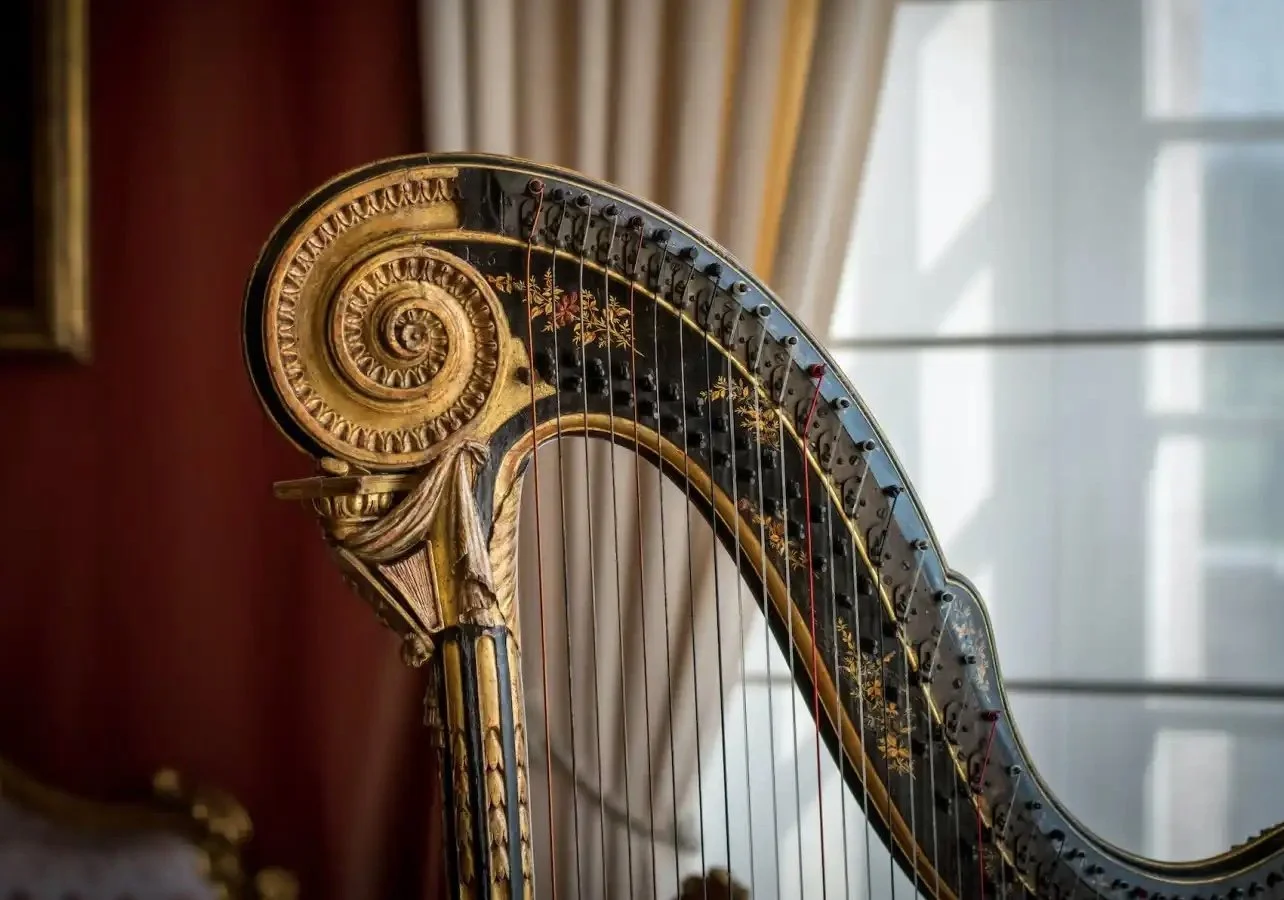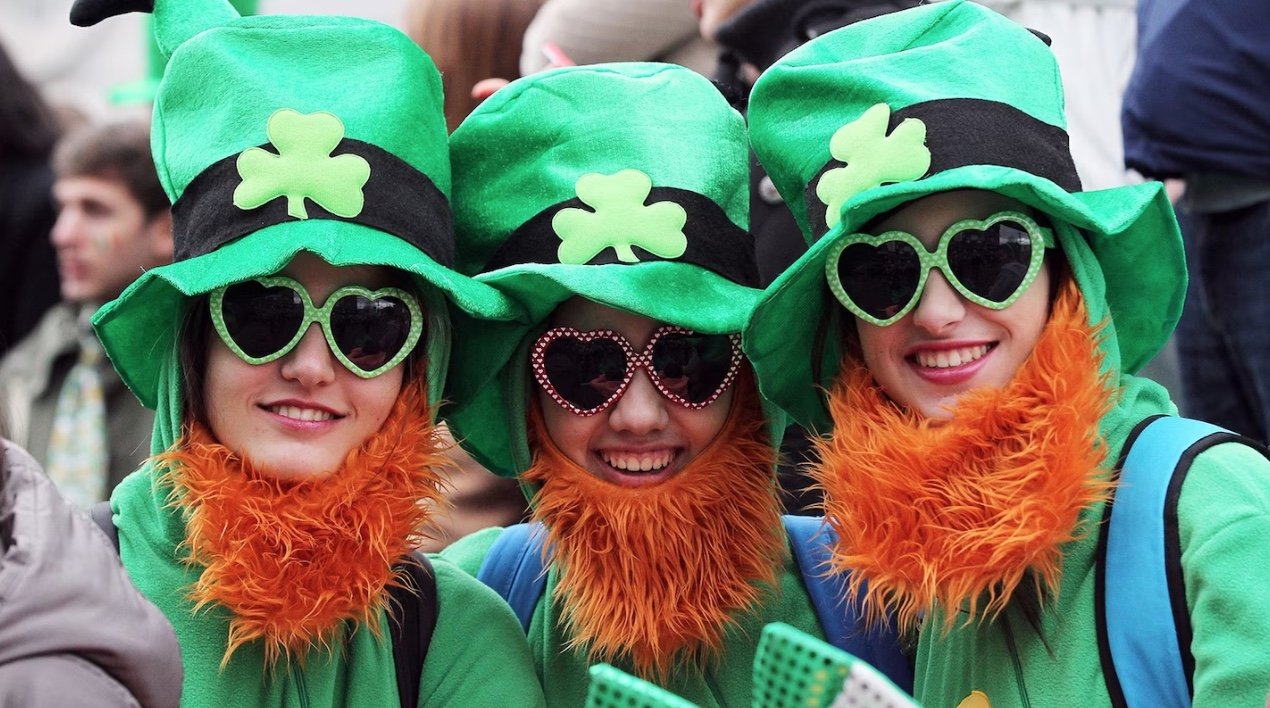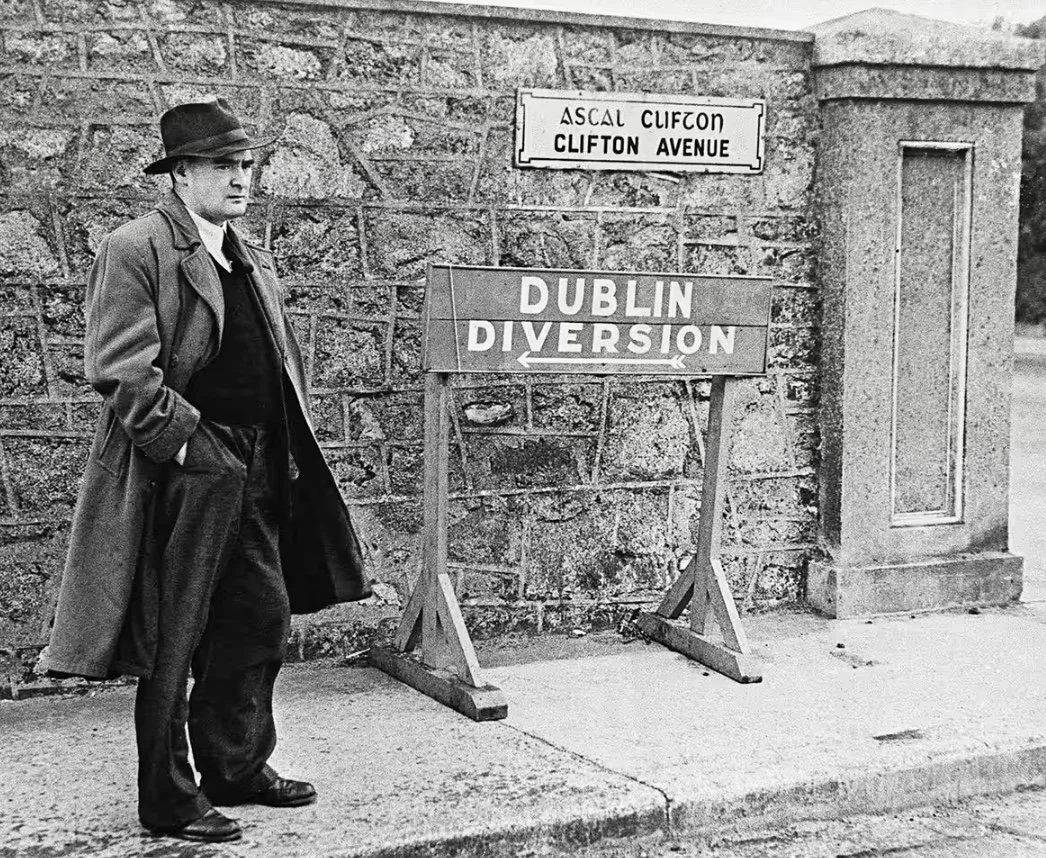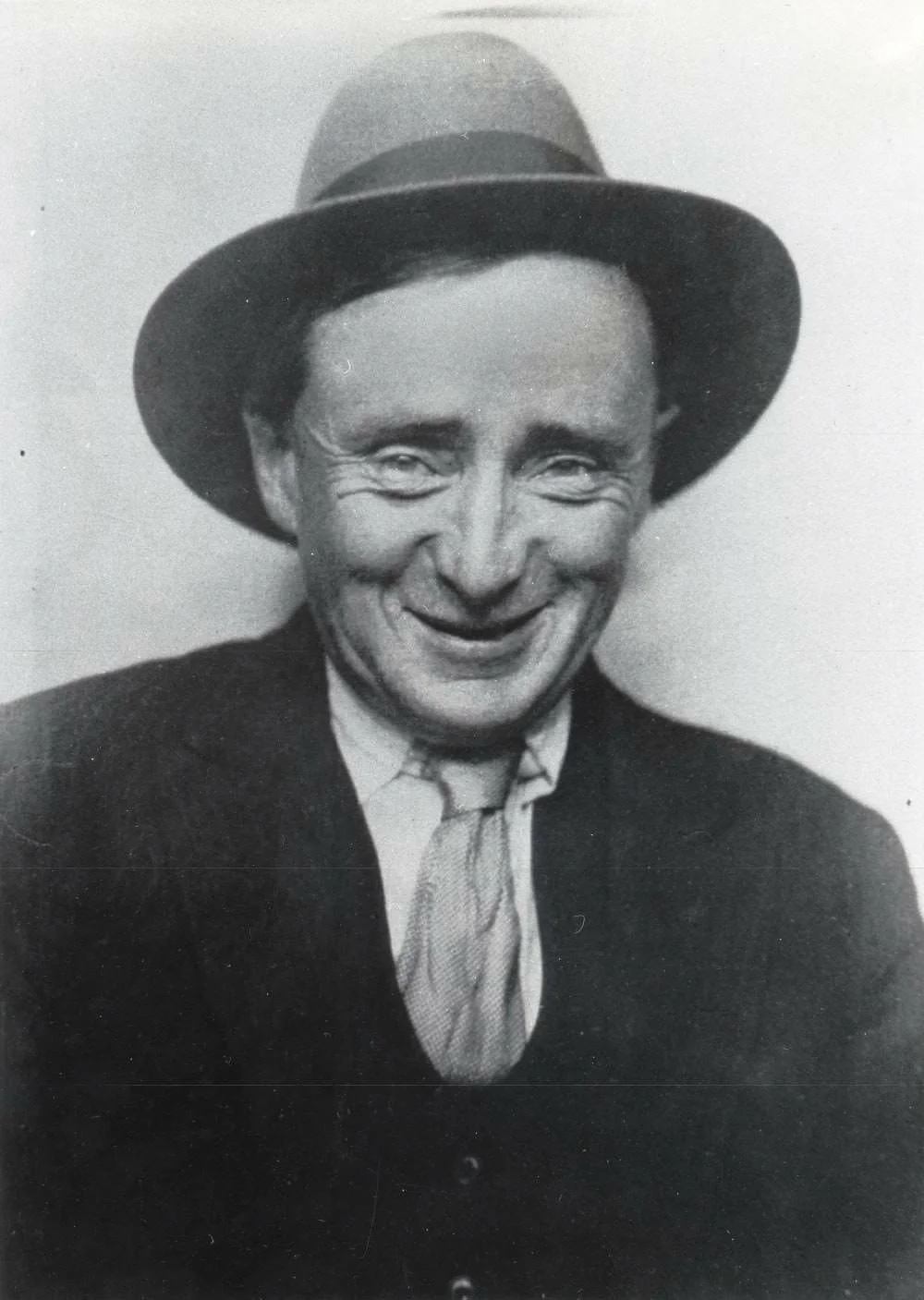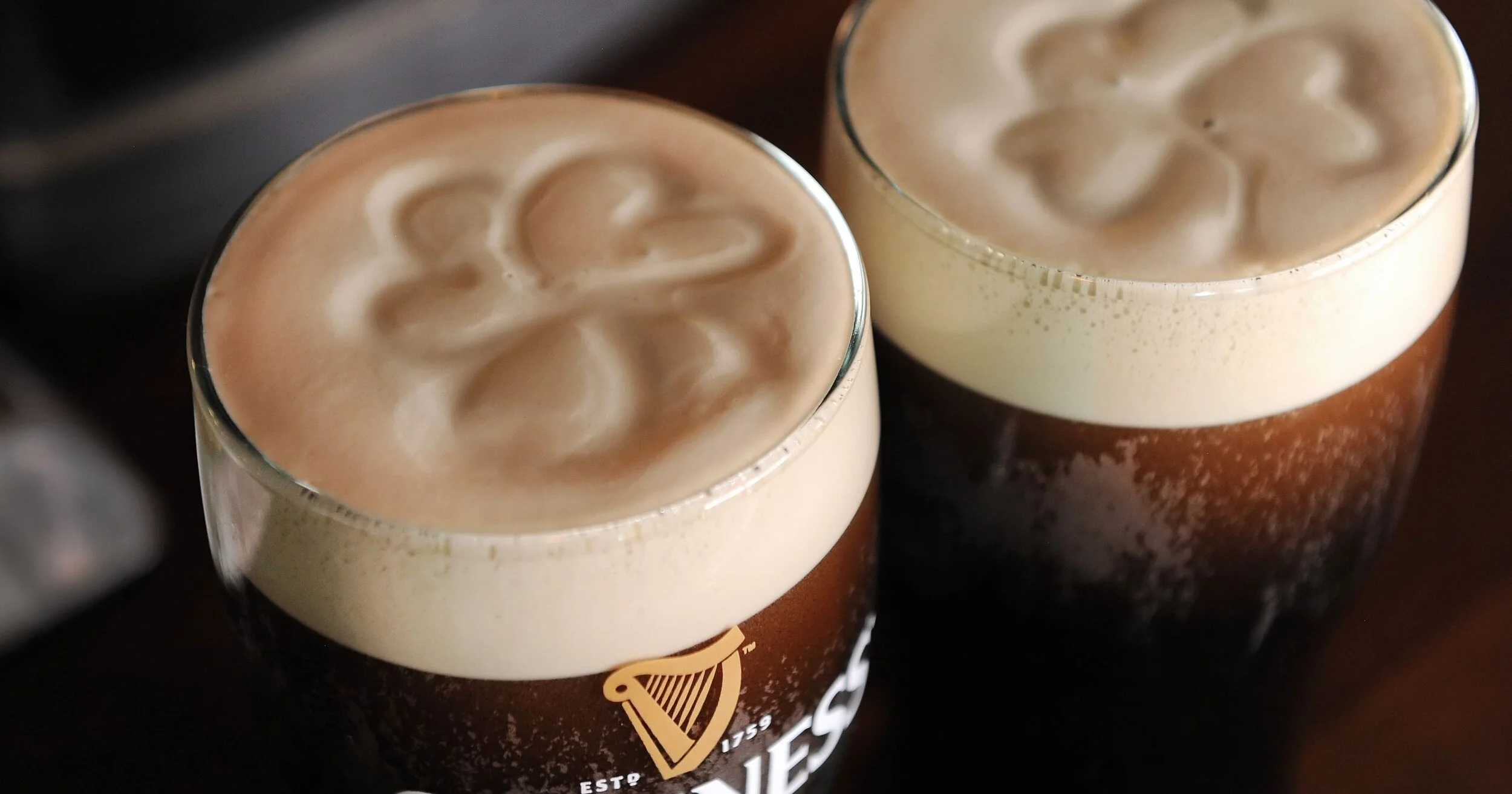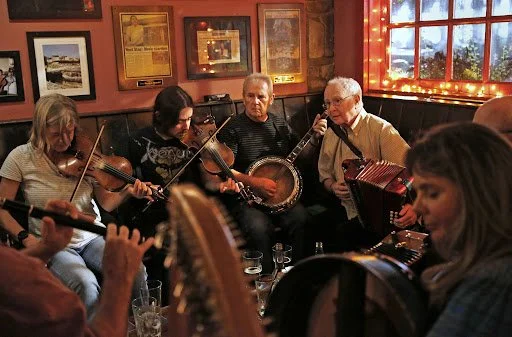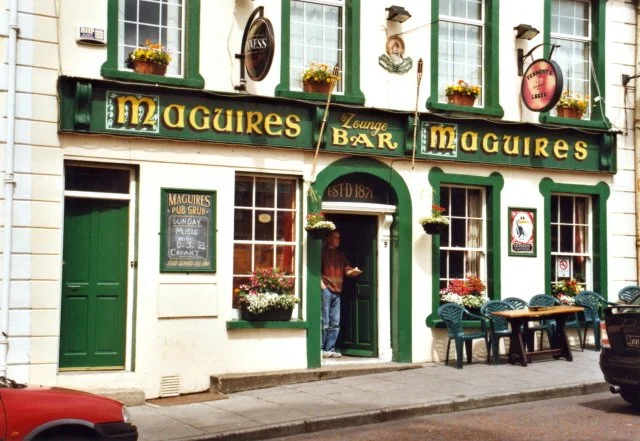By The Landlord
“Tears and laughter, they are so much Gaelic to me.” – Samuel Beckett
“There are no strangers here; Only friends you haven't met yet.” – William Butler Yeats
“When anyone asks me about the Irish character, I say look at the trees. Maimed, stark and misshapen, but ferociously tenacious.” – Edna O’Brien
“Ireland has one of the world’s heaviest rainfalls. If you see an Irishman with a tan, it’s rust.” – Dave Allen
“Is minic a bhris béal duine a shrón” (Many a time a man's mouth has broken his nose)
“Níor bhris focal maith fiacal riamh.” (A good word never broke a tooth)
“An té a bhíónn siúlach, bíonn scéalach.” (He who travels has stories to tell)
“Ní lia duine ná barúil.” (There are as many people as opinions) – Irish proverbs
Dia duit! Sláinte! So … it’s coming around again, this Sunday 17th March, but those unstoppable, unsinkable Saint Patrick's Day festivals will surely flow through the entire weekend, starting on Friday, right across the Emerald Isle, from Dublin to Cork, Galway to Limerick and in pubs springing from the Irish diaspora across the world. From the land of outstanding writers and fighters, saints and sinners, religious guilt and Guinness, it’s often a day for the honorary Irish too, from those who enjoy wit, wisdom, and a drink or three, to those who stereotypically end up acting the complete eejit with their daft leprechaun hats ‘n’ beards.
Guess the date …
But what of the craic? This term for news, gossip, fun, entertainment, and enjoyable conversation feels as Irish as the cláirseach Celtic harp, but ironically, it derives from a Middle English word, crak, meaning “loud conversation, bragging talk”, commonly used in northern England and Scotland since the 16th century, crops up in Shakespeare and was imported into Irish colloquialism in the 20th century. Perhaps that's the point then, Ireland has exported so much, why not import too? I have a little Irish in my blood, among other Anglo-Scottish and European heritage, just as like many millions of others. Blood, conversation, genes and booze, and music, flow in all directions.
But where to begin with this week's topic? Firstly I should say that in Ireland the word for the particular Goidelic language elsewhere referred to as Gaelic is either simply known as Irish or Gaeilge. And the topic is not merely about words in that language but is also about Irish character and ways of expression influenced by it. So then, that might start songs sung in the Irish language, or ones that include words from it, but then goes beyond into more cultural aspects.
Gaelic has enjoyed something of a popular resurgence in the last couple of years, not only in music, but also film. Will this week's songs likely be all folk? Not necessarily. For those who like to keep an eye on new music, last November on the Song of the Day section I posted a new release that combines English and Gaelic in the form of Dublin's Fontaines DC frontman Grian Chatten collaborating with Belfast rappers Kneecap on a number titled Better Way To Live.
It's a punchy, catchy, urban indie hip-hop number about finding that little spark of joy in life’s monotony, and in the day-to-day things: “In between the moments of that repetitive lift of the pint, or spark of a cigarette, there is an opportunity for bliss. Underneath that constant noise, there is a silence that can breathe new life and inspiration breaking through the mundane.” The rappers, Mo Chara and Móglaí Bap, backed by DJ Próvaí, brought up in an Irish language secondary school education, are lucky lads who grew up in peacetime Belfast, but have adopted a deliberately politically provocative name and look in their Republic of Ireland colour balaclavas.
But beyond that, their delivery style in "Gaeilge" has undeniable craft to it, one that harks more to the best days of early 90s hip-hop than more recent R&B and autotune styles of the genre. What particularly grabbed me was the rhythm and sounds of the words, that mixture of soft vowels and gritty vowels, something that has feeling without literal meaning. That palette of sounds is perhaps is similar experience to non-English speakers listening to the language.
They mainly sing about drugs, smoking, girls, fighting and drinking, as you'd expect, but also with an eye on Irish history and unification, rebellion and defiance, all of which are also very much part of the culture. Now going down a storm, perhaps unsurprisingly in the biggest diaspora of large cities in America on tour, there's even a biopic film out, about young guys forming a band in Belfast, which also starts Michael Fassbender, and the first Irish language film to shown at the Sundance Film Festival.
But it's not the first Gaelic film to hit the headlines. First-time feature director Colm Bairéad's heart-wrenchingly beautiful An Cailín Ciúin (The Quiet Girl), set in County Waterford, was recently nominated for best international film Oscar:
At this year's Oscar’s ceremony the acclaimed Irish actor Cillian Murphy ended his Oscars winning speech for Oppenheimer with a symbolic Gaelic phrase: "raibh míle maith agaibh" (thank you), and Irish culture, while constantly under American influence, continues to influence too as much as it exports abroad, with films such as multi-award-winning The Banshees of Inisherin.
The Irish language itself remains a minority one in Ireland, more centred in the west coast, but has had a huge influence on acclaimed writers from Flann O'Brien (Brian Ó Nualláin) to James Joyce, who while not writing in it, certainly had exposure to it, and his wife Nora was from Galway. Of the great author of Ulysees, Mairead Ni Mhaonaigh, Irish fiddler and the lead vocalist for the Irish folk music band Altan, argues:
“James Joyce's English was based on the rhythm of the Irish language. He wrote things that shocked English language speakers but he was thinking in Gaelic. I've sung songs that if they were in English, would have been banned too. The psyche of the Irish language is completely different to the English-speaking world.”
O'Brien meanwhile was a great parodist as well as celebrator of Irish culture, from his great English language works At Swim-Two-Birds and The Third Policeman, but as an adopter of many pen names, another masterpiece is his Irish-language novel, An Béal Bocht, was written under the name Myles na gCopaleen. Mischief, diversion and a sheer love of narrative and language are always at play in his Irish language world.
The joys of diversion: Flann O’Brien aka Myles na gCopaleen aka Brian Ó Nualláin
But Gaelic covers many moods. Another outstanding writer, Pádraic Ó Conaire, also came out of the Gaelic revival movement of the late 19th century. Lesser known these days than his contemporaries, Ó Conaire wrote more than 400 short stories between 1901 and his death in 1928, often of a darker hue, one described as being about "isolation, conflict between good and evil, the tragedy of life, hatred, blindness, despair, and madness”, but all fuel for great art, surely? His one novel, the darkly psychological Deoraíocht (Exile), was described by John T. Koch as a “strange and brooding, and the first of the genre in Irish”. So Irish culture of course, its not all about jokiness and banter and having a fun time at the pub.
Pádraic Ó Conaire
Gaelic has many poetic words that have filtered in the English language and folklore, ones that perhaps conjure up a variety of emotions and settings. One is “bean sídhe” or banshee, meaning woman of the fairies / supernatural / elves. Another is "go leor”, ie galore. Then there's smithereens, from the Irish “smidirín” and shenanigans, which is thought to derive from the Irish “sionnach”, for fox – in association with being sly or devious, or to mess around, and has parallels with “slíbhín” or a sly person, a sleeveen. Most commonly recognised is of course a shamrock, or "seamróg”, the famous four-leaf clover, the St Patrick symbol of Christianity, but also seen on the Aer Lingus logo, and the squiggle created on the creamy head of Guinness by any good bar person.
Guinness with a clover creamy top
There are many other wonderful Gaelic words for which there are no easy translations, such as acushla, a term of affection, from “a chuisle mo chroí” (“pulse of my heart”).
But with Ireland being a great mixer and exporter of people, Gaelic's potency often comes from how it reacts to, and intertwines with other cultures and this is where this topic might find particularly fertile ground. The language also has variants Isle of Man and of course, Scotland, the country from to which which so many Irish people have swapped. With mass emigration, in the late 19th century, with as many as 100,000 Isle of Breton Nova Scotians spoke Gaelic as their mother tongue.
Of course then our Bar is packed with with punters awaiting a drink with Gaelic on their mind as well as their tongues. One of the loudest calling for attention is wise-cracking American standout Denis Leary, who definitely feeling Irish today, and can't help but tell us his own "St Patricks Day Irish History Fact":
“Fuck yeah! We invented whiskey, sarcasm and bare knuckle brawling. All on the same night. In that order! ... My father could swear in Gaelic and English, by the way, ladies and gentlemen!"
Sitting more quietly in the corner, here's that best-selling more serene-style singer Enya: "Singing in Gaelic is very, very natural to do. I think lends itself very much so to being sung."
Dublin's Gavin Friday, who was christened Fionán Martin Hanvey, also sings up for what might have been his mother tongue if it were not for outside influences. "Our language was even taken from us. The Irish Gaelic language was outlawed and the religion was outlawed. Hence the religion later being stronger; stronger to a negative point of view. But our venge was, I mean if you listen to Irish language, it's very complicated but it's very poetic."
Poetic indeed. So where might your nominations begin? Aeons to Anúna? Blink to Kate Bush? Chieftans to Clannad or Corrs? Demien Dempsey to Dubliners? They’ve all got Irish influences. I won't go through the entire alphabet but it's possible to do so all the way from Lisa Hannigan to Hothouse Flowers, Sinéad O'Connor to Saw Doctors and even Sting, Van Morrison to The Waterboys. Songs don't have to be all in Gaelic, but perhaps just contain words, phrases, or styles that capture Irish culture across as many genres as possible.
Let’s all join in …
Let's leave you then with some other distinctive Irish Gaelic sayings, ones that also capture some of the character of this internationally appealing culture:
“An té nach bhfuil láidir, ní foláir dó bheith glic.” (He who is not strong must be clever.)
“Inis do Mháire i gcógar é, is inseoidh Máire do phóbal é.” (Tell something to Mary in confidence and she will tell the whole parish.)
“Is fearr an tsláinte ná na táinte.” (Health is better than wealth)
“Níl saoi gan locht.” (There's no wisdom without weaknesses).
And finally:
"An té a thabharfas scéal chugat tabharfaidh sé dhá scéal uait." (The person who comes with a story to you will bring two away from you.)
So then, hopefully you too with leave with at least twice as many songs and stories as those you bring to the bar. That's what this place is for, after all. Serving out the this week's Guinnesses as well as guidance is this week's honorary Irishman, Marco 'O den Ouden (or pseudonymously Ned U. O. (Ned) O'Cram). Place your orders and return empty pint glasses of songs in comments below, for final orders on Monday at 11pm Irish time, for playlists published next week. Sláinte!
County Donegal establishment
New to comment? It is quick and easy. You just need to login to Disqus once. All is explained in About/FAQs ...
Fancy a turn behind the pumps at The Song Bar? Care to choose a playlist from songs nominated and write something about it? Then feel free to contact The Song Bar here, or try the usual email address. Also please follow us social media: Song Bar Twitter, Song Bar Facebook. Song Bar YouTube, and Song Bar Instagram. Please subscribe, follow and share.
Song Bar is non-profit and is simply about sharing great music. We don’t do clickbait or advertisements. Please make any donation to help keep the Bar running:

